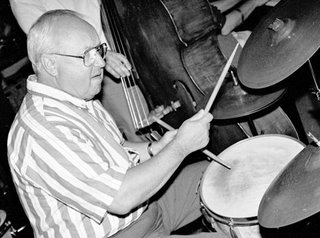Some Thoughts to Entertain
“I’ve been a great jazz fan my whole life. I certainly like modern jazz as well, but my favourite kind is New Orleans jazz. Something about the primitive quality, the simplicity of it, the directness. It is the one style of jazz that stays with me the most.”
So says Allan Stewart Konigsberg, better known as Woody Allen in a recent article in New York’s Village Voice.
“Early jazz was very pleasurable and very simple,” explains Allen. “After a while, that stuff became concert music, and the chord progressions got very complicated, and the harmonies got very complicated. It became less pleasurable. Not less great … But it required more concentration and more effort from the audience.”
Allen has just finished the season of sold-out Monday night appearances at New York’s up-market Carlyle Hotel where, to be honest, his fame rather than his music was the big attraction, and forking out $100 for the privilege wasn’t a problem.
He does not deny his limitations as a musician, but his love of the music is genuine.
It is, however, a form of jazz that is no longer a part of the mainstream of the music. The audience for traditional jazz has diminished, partly through attrition, changing tastes, media neglect and the fact that jazz has embraced so many different influences that it is now well nigh impossible to define. Only a few young musicians now choose to specialize in traditional jazz and you have to look to Europe to find many of them.
Certainly, early jazz and swing musicians looked upon themselves largely as entertainers. There was no comprehension that jazz music might be or develop into an art form. “Entertainment”: such a vital word when describing early jazz, and a word that’s foreign to much of today’s music.
New York, which used to be a stronghold of jazz in the tradition with places such as Eddie Condon’s and Jimmy Ryan’s still does have a few places where you can hear jazz that swings: Arthur’s Tavern on Grove Street, Il Valentino at the Sutton Hotel on E. 56th St., and on Mondays you can catch Vince Giordano and the Nighthawks (11-piece band) at Club Cache, downstairs at the Edison Hotel on W. 46th St.
Here in Toronto the longest running of these traditional strongholds has to be Grossman’s Tavern on Spadina, which this year celebrates the 40th anniversary of New Orleans Jazz every Saturday afternoon from 4:30 pm.
 The original bandleader was Cliff (“Kid”) Bastien, and his Saturday afternoon residence at Grossman’s began when, in 1970, then-owner Al Grossman hired the young trumpeter and his Camelia Band, later called Kid Bastien’s Happy Pals, to perform every Saturday. Apart from a short period around 1980, Kid played there until his death in February 2003. But the band, now led by Patrick Tevlin, still plays New Orleans jazz to a faithful following.
The original bandleader was Cliff (“Kid”) Bastien, and his Saturday afternoon residence at Grossman’s began when, in 1970, then-owner Al Grossman hired the young trumpeter and his Camelia Band, later called Kid Bastien’s Happy Pals, to perform every Saturday. Apart from a short period around 1980, Kid played there until his death in February 2003. But the band, now led by Patrick Tevlin, still plays New Orleans jazz to a faithful following.
C’est What has bi-weekly sessions with the Hot Five Jazzmakerss from 3-6pm, although in the next few weeks the dates are June 5 and July 4. They play a mix of ragtime, blues, spirituals and classic jazz, and they have been strutting their stuff in this downtown watering hole on Front St. E. for over 20 years. The leader is trombonist Brian Towers, and the band is dedicated to playing in the traditional style with the emphasis on entertaining their audience.
It’s worth making the observation that when I say traditional jazz, I’m using terms of reference that have changed from the old days when jazz was still relatively easy to define – the time when you were either a traditionalist or a bebopper. Nowadays, as I have said in earlier columns, it is pretty well impossible to define just what jazz is, so widespread are the influences – and Charlie Parker’s music, once considered pretty “outside,” now sounds positively traditional.
Having said that, a great spot for jazz that swings has to be Quotes on King St., opposite Roy Thomson Hall. They have established a loyal following for their Friday sessions from 5 to 8pm with the resident Canadian Jazz Quartet plus a guest each week drawn from the extensive pool of front-rank local musicians. If you want a seat near the band you have to get there early.
What makes this club so successful? For one thing the timeframe of 5 to 8 is a winner. You can make your way there after work or make it a destination. you can enjoy the music and be home by 9 o’clock, or go out for an evening on the town. It also falls into the TGIF category at the end of the work week for most people.
But there’s another significant element; the quality of the music is extremely high by any standards, and the club has become a “hang” for local musicians, adding to the cachet. In this regard it is reminiscent of the old Montreal Bistro. They do, however, take a break over the summer months, so you will have to wait until September 17, when jazz at Quotes will enter its fifth year of swinging jazz.
However, the reality is that more and more traditional jazz finds itself surviving in little enclaves, supported by a small but dedicated following. Yet there’s a vital significance to this music: every style of jazz is an integral part of the story and if you know nothing about the roots your music – or your listening experience – will be less rewarding than it might have been.
If art reflects the age, and recognizing that we are in an era of anger and frustration, then it’s no wonder that today’s music often reflects what is happening around us these days. As the Austrian writer Ernst Fischer said: “In a decaying society, art, if it is truthful, must also reflect decay.” But I like to think that music also has the power to heal, soothe and calm, and there has to be room in our lives for jazz that lifts our spirits and entertains us.
Happy listening – with the emphasis on happy!
Jim Galloway is a saxophonist, band leader and the former artistic director of Toronto Downtown Jazz. He can be contacted at: jazznotes@thewholenote.com.


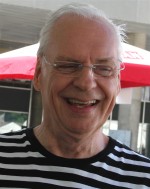
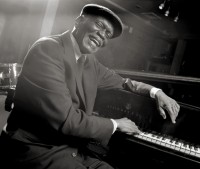
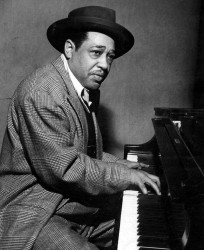
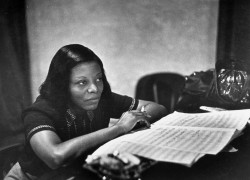
/Bill and Chris King 1.jpg) The announcement was not entirely unexpected. Attendance last year was very disappointing, giving Bill and Kris King good reason to ask themselves if it was worth going on with the event. What had begun 15 years ago as the Jazz Report Awards, an intimate evening in a club setting, over the years had evolved into a large and costly production.
The announcement was not entirely unexpected. Attendance last year was very disappointing, giving Bill and Kris King good reason to ask themselves if it was worth going on with the event. What had begun 15 years ago as the Jazz Report Awards, an intimate evening in a club setting, over the years had evolved into a large and costly production.